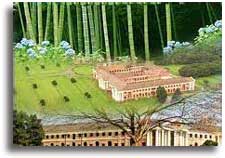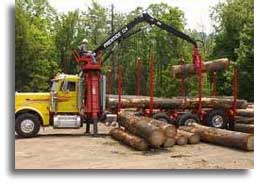FORESTRY
Introduction to the Career
Forestry is the art and science of managing forests, tree plantations and natural resources. The main goal of forestry is to create and implement systems that allow forests to continue a sustainable continuation of environmental supplies and services. Forest wealth also contributes significantly to the economy of the country, specially trained personnel are therefore needed to maintain and regenerate the forest cover, wealth and resources. This mostly involves the services of forestry specialists, forestry management experts and forest officers.
Forestry involves protection of forests from fire, pests, disease, encroachment and indiscriminate felling of trees and farming of trees to ensure contributing timber supply. Forestry occupations fall into three main categories: Government foresters take care of government-owned forests and parks that are essentially public property. Industrial foresters work within the private sector and make a living by helping their employers procure timber and other related raw materials for business. Consulting foresters work more as researchers and supervisors. They advise businesses on the best way to harvest the forest, and may offer consultancy on how to enrich business.
Eligibility
Qualification Those with Physics, Chemistry and Biology at the intermediate level can go for B.Sc Forestry course. Further the master’s level offers specialisation in subjects like Forest Management, Commercial Forestry, Forest Economics, Wood Science and Technology, Wildlife Science, The B.sc. course may be followed up with the 2-year M.Sc. in Forestry. PGDFM is a field based course which combines managerial qualities concordant with the demands made by the forestry sector.
Courses in Forestry and Forest Services are

- B.Sc Forestry
- M.Sc Forestry
- B.Sc Wildlife
- M.Sc Wildlife
- M.Sc, Wood Science and Technology
Industry

In 2006 forestry in India underwent a major change with the passage of the Forest Rights Act, a new legislation that seeks to reverse the "historical injustice" to forest dwelling communities that resulted from the failure to record their rights over forest land and resources. It also sought to bring in new forms of community conservation.
Nature of Work
Forester takes care of forest resources by protecting them from fire, pests, disease, encroachment and indiscriminate felling of trees. The tasks which they take up involve:
- They advise clients on good forestry practices.
- They are entrusted with the task of organizing the growing, harvesting, marketing and sale of timber.
- Annual work programs are planned and implemented by them and they ensure the effective use of resources to meet the current objectives of the forest area.
- They supervise forest workers and contractors in the field.
- They help in wasteland development.
- They contact the customers, landowners, timber merchants, the public and local authorities.
- Liaising with and working on many projects with other professionals, such as landscape architects, biologists, surveyors ,engineers and charitable bodies.
Job Descriptions
A forester's job is mostly outdoors for the first part of the career and is more than just logging. Entry level tasks include conducting land surveys, working in an urban park, evaluating water quality and insect outbreaks as well as planting seedlings and planning recreational use of forest lands. After several years on the job, a forester will advance to more indoor tasks such as preparing reports, managing budgets and public relations. They also get employed as top executives or become consultants with more experience and knowledge. The job can be physically demanding because most have to work outdoors and endure different kinds of weather conditions, work in isolated areas and different landscapes such as thick vegetation, wetlands, mountains and such. Forester’s today use a variety of computer applications and technology in conducting their day-to-day responsibilities.
Job Opportunities /Prospects
The forester is very much responsible for protecting and regenerating forests, protecting wildlife habitats, checking for and fighting wild fires, landscape management and so on. With experience foresters can graduate to managing public relations, preparing reports and managing budgets. Foresters work for:
- Timber industry,
- Government agencies,
- Conservation groups,
- Local authorities,
- Urban park boards,
- Citizens' associations,
- Private landowners,
- Work in tree nurseries growing seedlings for woodland creation or regeneration projects. Foresters mostly participate in wildlife conservation planning and watershed protection.
Forest Range Officers: Forest range officers take care of public forests, sanctuaries, botanical gardens, etc. They have conservators, loggers and other junior personnel working with them. Entry into this post is through the Indian Forest Service (IFS) Examination conducted by the Union Public Service Commission. A Forester can also work as the following according to ones interest:
Dendrologists: Dendrologists specialize in the scientific study of trees and woody plants.
Enthologists: is the scientific study of animal behavior in its natural environment.
Entomologists: specialize in the study and control of diseases caused by insects and pests.
Silviculturists: refers to the growth of plantations that yield periodic harvests.
Zoo curators: involves animal welfare in the zoos and also undertake conservation programmes.
Top Recruiters and companies
- Governmental, non-governmental organizations interested in preservation of forest resources
- Government agencies,
- Corporates having own plantations for timbering
- Industries that utilize forest resources employ industrial and agricultural consultants
- Indian Council of Forestry Research and Education (ICFRE) and its affiliated Forestry research institutes such as Forest Research Institute, Dehra Dun, Institute of Social Forestry and Eco-rehabilitation, Allahabad, etc.
- Wildlife Research Institutes in Dehra Dun, Coimbatore, etc.
- Zoological Parks
- Wildlife Ranges
- Education sector as tutors.
Remuneration
Forestry graduates working in government agencies get salary as fixed by the concerned governments. Their salary ranges between Rs 8,000 to Rs 15,000 per month depending upon qualification and experiences. Those working in corporate houses and consultancy companies have very lucrative pay packages along with numerous fringe benefits. Salary and other allowances are even higher in international agencies, media houses and consultancy firms. Nowadays NGOs are also offering lucrative pay packages to experts in forestry and wildlife. Private consultants have also good earning depending upon number and nature of their clients.
Essential and Desired Skills
Liking for outdoors, spirit of adventure, good health, stamina and physical fitness, patience, scientific temperament, organizing ability, public relations skills, practicality, courage, decision-making ability, capacity to work long hours, a genuine interest in the preservation of the natural environment and habitat, inclination for research and academic bent of mind, curiosity, excellent skills of observation, interest in agriculture and geography.
Procedure for Indian Forest Services (IFS)

List of Institutions Offering Forestry Courses In India :
Forestry Institution In India |
Success Stories
Forest Management in India: Bringing a Network Back to Life
In India, forests are a main source of livelihood and income for some 315 million people, nearly one-third of the country's total population. The majority is very poor, and for a long time they were deprived of their rights and fair access to these natural resources. As traders and the government heavily exploited the forests, they became increasingly degraded.
Animosity between local communities and the nation's forestry department was constant. Then, in 1988, a new policy made it possible for India's forests to be managed by the government and the people together. The result was the introduction of joint forest management in 1990.The Ford Foundation initially supported joint forest management in two states and later assisted the others.
The efforts of 25 non-governmental organizations, started a network for information exchange and policy advocacy. By the end of 1996, the network had grown to more than 150 members, ranging from nongovernmental, research and academic institutions to a few forestry agencies. The Delhi-centered network faltered, however, when pressed to respond to the demands of new members from all over the country. Also, the network had neither effective links to grass-roots institutions nor regular channels to forestry policymaking processes.
